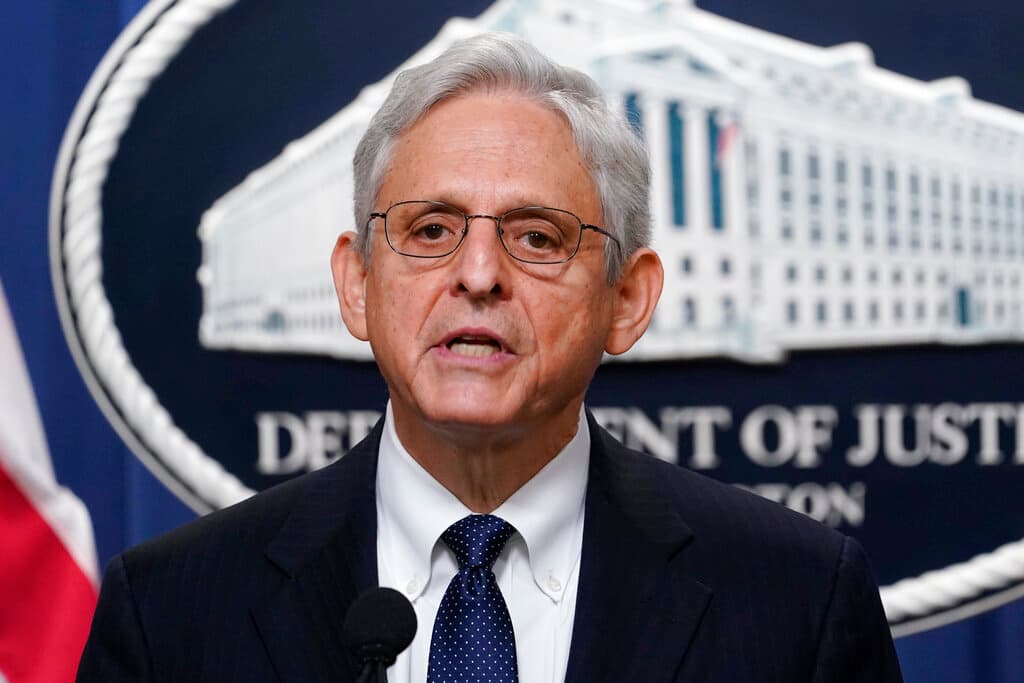Key Document on Raid of Trump Compound Will Likely Be Hidden, Even If Warrant Is Unsealed
The attorney general refuses to disclose further details during his brief remarks, but hints at imminent disclosures.

The news the attorney general broke on Thursday — that the Department of Justice would move to unseal the warrant and property receipt from the search of President Trump’s compound at Mar-a-Lago — is outweighed by the importance of a document that could be hidden for some time: the affidavit that lays out the case against Mr. Trump.
In sharing that he “personally approved” the successful petition for a warrant, the attorney general, Merrick Garland, confirmed that the search of Mar-a-Lago was given the go-ahead by America’s top law enforcement official. In requesting that a magistrate judge, Bruce Reinhart, unseal that same warrant, he renders it likely that its contents will become public.
The justice department notes that “the search warrant and related materials have been the subject of significant interest and attention from news media organizations and other entities.” Mr. Trump has a copy of these documents, and has thus far not released them. Judge Reinhart has ordered the two sides to confer on whether an agreement is possible on this score.
In ascertaining what that document might contain, the Constitution prescribes that “no warrant shall issue, but upon probable cause, supported by Oath or affirmation, and particularly describing the place to be searched, and the persons or things to be seized.” Probable cause requires that justice department lawyers demonstrate that recovery of evidence was reasonably likely.
While an appendix to the warrant could contain clues to the nature of the investigation, the document itself is likely to read more as a list of effects and a real estate description. These must be described with sufficient “particularity,” but will likely fall shy of a complete picture of the case.
That portrait in full is contained in the affidavit, which makes the full case for probable cause that underwrites the search warrant. Thursday’s filing contained a request to unseal not only the search warrant and property receipt — an inventory of what was taken — but also “Attachments A and B,” which well could be the documents of greatest interest.
The showing of probable cause is not only constitutionally required but also well attuned to the frothy climate of current conversation regarding the FBI and law enforcement, which has come under scrutiny for its attention to Mr. Trump. The unprecedented search at Mar-a-Lago has drawn criticism that pointed to the possibility of prosecutorial overreach.
General Garland took to the podium at Washington, D.C., on Thursday amid a swirl of controversy fueled by the raid of Mr. Trump’s Mar-a-Lago estate, an armed attack on a FBI field office at Cincinnati, and an accelerating investigation into the events of January 6, 2021, that could yet rope in Mr. Trump.
In the hours before Mr. Garland spoke, the New York Times reported that Mr. Trump had been issued subpoenas for documents not included in the cache of materials that were returned to the National Archives months ago.
Responding to the fraught politics of this week’s developments, General Garland maintained: “Faithful adherence to the rule of law is the bedrock principle of our department and this country,” and he defended the employees of the department he leads.
Mr. Garland stated that the department generally prefers to pursue “less intrusive means” when investigating potential crimes, and explained: “Much of our work is conducted outside the public eye to protect the constitutional rights of all Americans.”
As he walked off, Mr. Garland repeated twice: “That is all I can say right now.” If Mr. Trump does not agree with the DOJ’s motion to unseal the documents, it will owe the court a counter-argument in writing in the days ahead.

